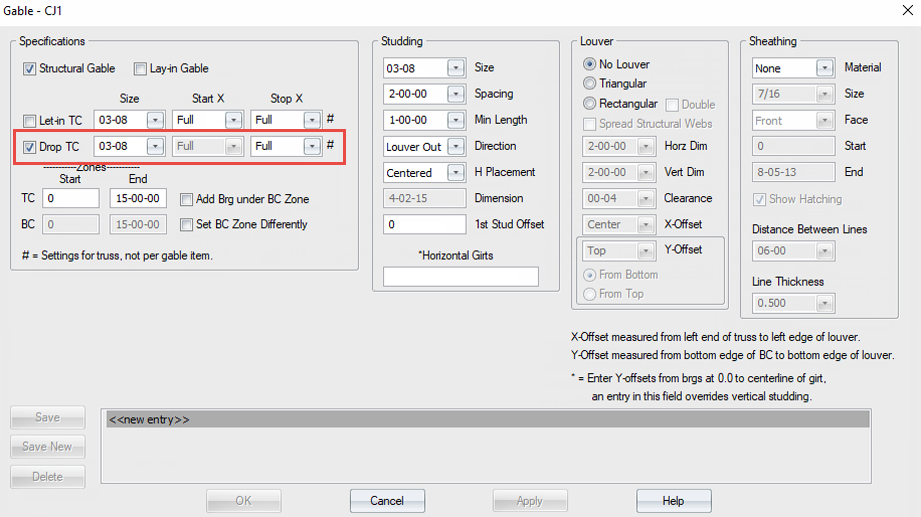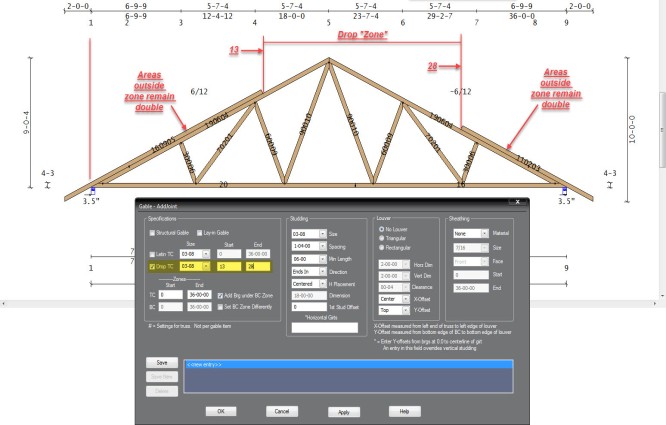Purpose
A drop gable is a truss where the structural top chord is lowered, and a non-structural top chord is applied above the "dropped" top chord, to allow for notching in the non-structural member for outlookers (perpendicular to the plane of the truss).
Steps
- There are two ways to create a drop gable:
- Enter dg on the top chord command profile line.
- By default, the dg command provides a full-length (trimmed to peak) overhang member. The format of this command is dg # # (can be upper- or lower-case). The first # is the size is the size of the drop top chord member, and, therefore the amount of the "drop" applied (plumb cut of the member size).. The second # is the length of the drop top chord member, defaulted to Full to extend to the peak, with a minimum of OH + 2' ; anything between that and Full may be specified.
- The dg # # # command allows for a stop location. The first # is the size of the drop top chord member; the second # is a placeholder (this number is required, but ignored; it is necessary only to set up the StopX location). The third # is the stop location, which stops let-ins at that location, trimmed to the next closest joint.
- Use the Drop TC option on the Gable dialog

If using the dialog, select the size and stop location.
2. Make any other edits and click OK to save your changes.
 Notes:
Notes:
-
Outlooker notches are generally only 1.5" deep, but can be up to the size of the non-structural member. No notching is allowed in the heel joint area where the analog exists for the overhang member and "reverse slider" portion of the NS member; notching is generally desired to begin as near to 2' uphill from the end of the truss as possible.
